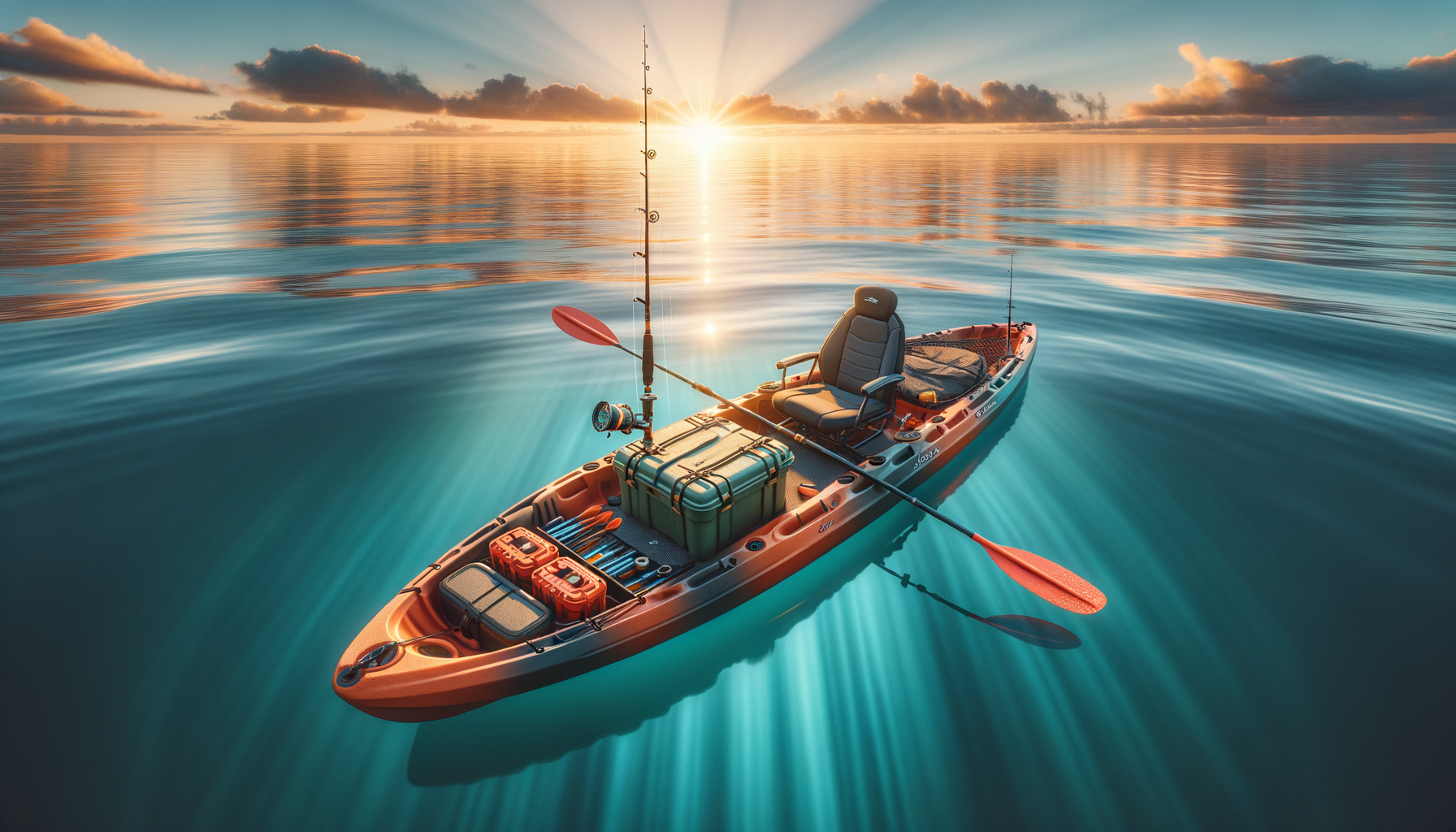Embracing the Tranquility: The Rise of Fishing Kayaks
In recent years, fishing kayaks have surged in popularity among anglers seeking a more intimate and peaceful experience on the water. Unlike traditional boats, fishing kayaks offer a unique blend of accessibility, affordability, and maneuverability. With the ability to reach secluded fishing spots that are often inaccessible by larger vessels, kayaks provide anglers with a sense of freedom and adventure.
One of the key advantages of using a fishing kayak is its lightweight and portable design. Most fishing kayaks are made from durable materials like polyethylene, which ensures they are both robust and easy to transport. This means that anglers can easily carry their kayak to remote locations, allowing them to explore new fishing areas without the need for a trailer or a large vehicle.
Moreover, fishing kayaks are often equipped with features that enhance the fishing experience. These can include rod holders, tackle storage, and even pedal systems for hands-free navigation. Such innovations cater to both novice and experienced anglers, making fishing kayaks a versatile choice for anyone looking to enjoy a day on the water.
Choosing the Right Fishing Kayak: Key Considerations
When selecting a fishing kayak, there are several important factors to consider to ensure it meets your needs. The first consideration is the type of water you plan to fish in. Kayaks designed for calm lakes and rivers differ significantly from those built for ocean or fast-moving waters. For example, a wider kayak offers more stability, making it ideal for beginners or for use in calm waters.
Another crucial aspect is the kayak’s weight capacity. It’s essential to choose a kayak that can accommodate your weight along with your gear. Overloading a kayak can affect its performance and safety, so always check the manufacturer’s specifications. Additionally, consider the kayak’s length and width. Longer kayaks tend to track better and are faster, while shorter ones offer greater maneuverability.
Comfort is also key when spending long hours on the water. Look for a kayak with a comfortable seat and adjustable footrests. Some models even offer padded seats with lumbar support, which can make a significant difference during extended fishing trips.
- Type of water: Calm vs. ocean
- Weight capacity: Ensure it fits your needs
- Length and width: Balance between speed and maneuverability
- Comfort: Padded seats and adjustable footrests
Fishing Techniques and Strategies from a Kayak
Fishing from a kayak requires a slightly different approach compared to traditional boat fishing. The stealth and agility of a kayak allow anglers to get closer to fish without disturbing them, which can be a significant advantage in clear or shallow waters.
One popular technique is to use the kayak’s mobility to drift along with the current, casting lures or bait in various directions. This method allows you to cover more area and increase your chances of a catch. Additionally, the low profile of a kayak means you can easily cast under overhanging branches or into tight spots where fish might be hiding.
Another effective strategy is to use a fish finder, which can be mounted on the kayak. This device helps locate schools of fish and underwater structures, providing valuable insights into where fish are likely to be. Combining this technology with traditional fishing skills can enhance your success on the water.
- Drift fishing: Utilize the kayak’s mobility
- Low profile casting: Access tight spots
- Fish finders: Enhance location accuracy
Safety Tips for Kayak Fishing Adventures
Safety should always be a top priority when fishing from a kayak. While kayaks are generally stable, it’s essential to be prepared for unexpected situations. Wearing a personal flotation device (PFD) at all times is crucial, as it can save your life in case of a capsize.
Before heading out, check the weather forecast to avoid being caught in adverse conditions. High winds and storms can make kayaking dangerous, especially in open waters. Additionally, inform someone about your fishing plans, including your expected return time and location.
It’s also wise to carry a basic safety kit, which should include items like a whistle, a waterproof flashlight, and a first aid kit. These tools can be invaluable in emergencies, providing you with the means to signal for help or address minor injuries.
- Always wear a PFD
- Check weather conditions
- Inform someone of your plans
- Carry a safety kit
The Environmental Impact of Kayak Fishing
Kayak fishing is not only enjoyable but also an environmentally friendly way to fish. Unlike motorized boats, kayaks produce no emissions, reducing their carbon footprint significantly. This makes them an excellent choice for eco-conscious anglers who wish to minimize their impact on the environment.
Additionally, kayaks cause less disturbance to aquatic ecosystems. Their quiet operation means less disruption to wildlife, allowing for a more harmonious interaction with nature. This aspect of kayak fishing is particularly appealing to those who value sustainability and conservation.
Anglers can further reduce their environmental impact by practicing catch and release, using barbless hooks, and ensuring they leave no trace of their presence. By adopting these practices, kayak fishers can contribute to the preservation of aquatic habitats for future generations.
- Zero emissions: Eco-friendly fishing
- Minimal disturbance: Quiet operation
- Conservation practices: Catch and release, barbless hooks








